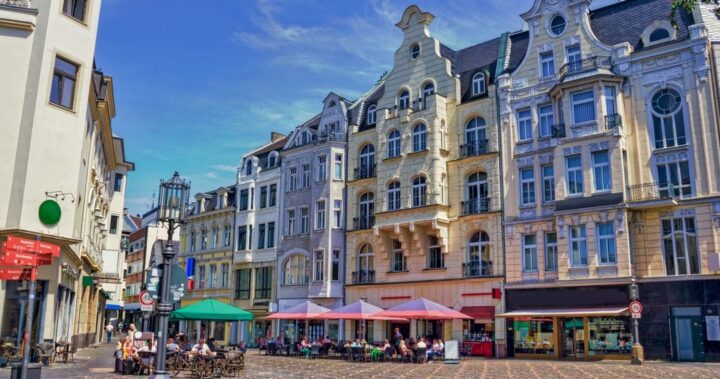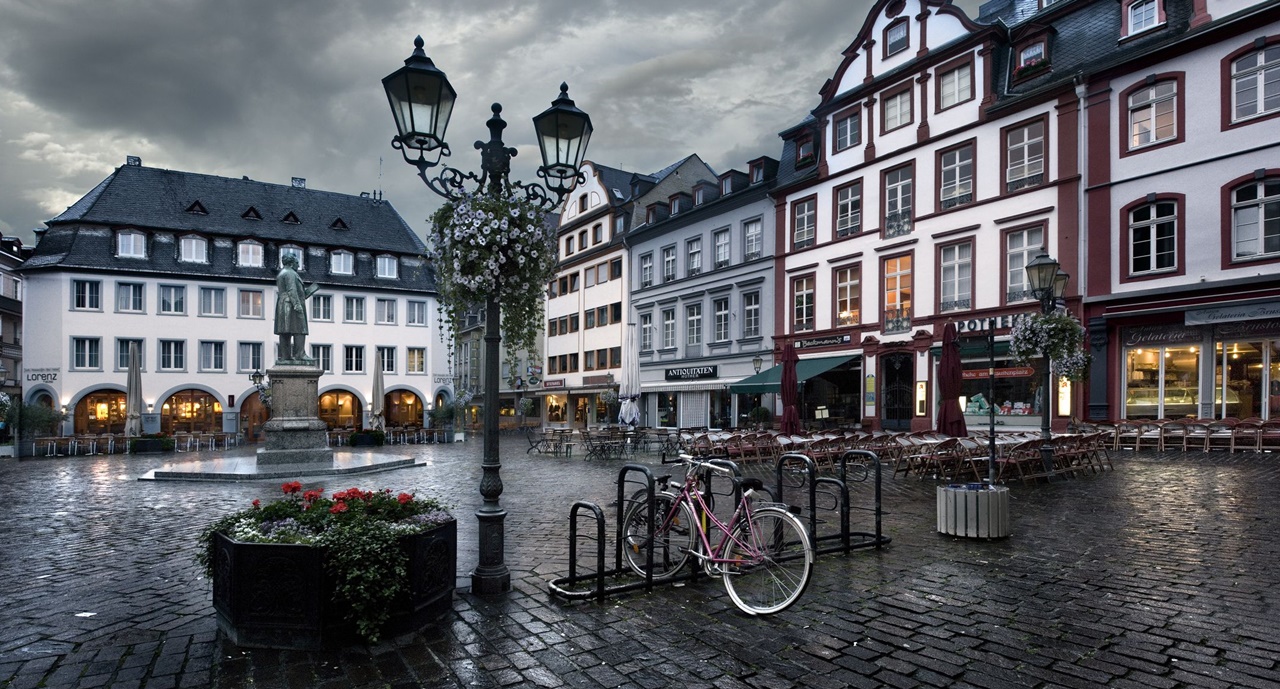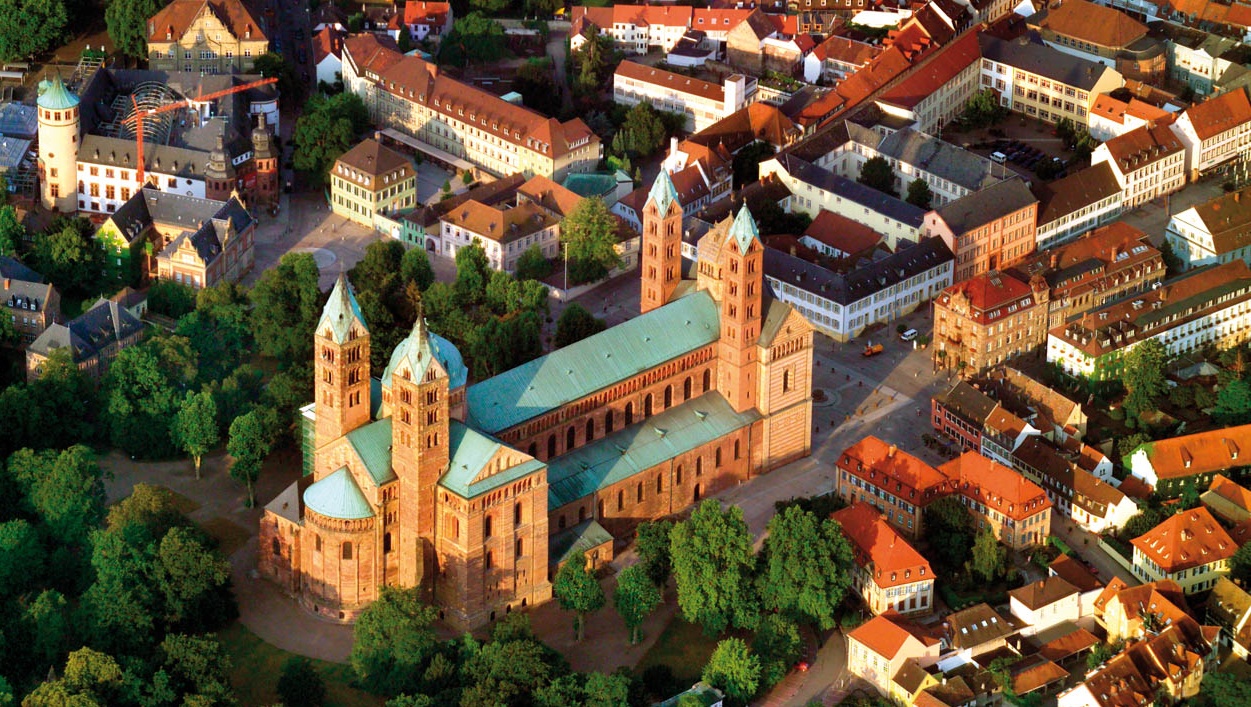
Oldies but Goldies: The 12 oldest cities in Germany
The ancient Romans founded German cities more than 2000 years ago! Discover the oldest cities in Germany and why you should definitely visit them!
The oldest cities in Germany date back to the Roman Empire, which covered vast areas of what is now West Germany for centuries. Troops set up military camps along the Rhine, many of which later grew into the towns that still exist today. We invite you on a journey of discovery to the oldest and most impressive cities in our homeland!
1. Worms, Rhineland-Palatinate
In Germany, Worms is often associated with its imposing Imperial Cathedral. It is also mentioned in the Song of the Nibelungs, the 13th-century epic poem that tells the story of the dragon slayer Siegfried. Worms as a city was conquered by the Romans in 14 BC. Founded in 300 BC, it is believed that Germanic tribes and Celts settled the area more than 5000 years ago, making the city the oldest in all of Germany. Under Roman rule, Worms became the capital of the Burgundian kingdom and relics of that time can be seen in the interesting Worms City Museum.
2. Bonn, North Rhine-Westphalia
Bonn is not only the birthplace of Ludwig van Beethoven, but also the former federal capital – not to mention the home of Germany’s UN headquarters, which was built on foundations over 2,000 years old. Over the centuries, the Roman settlement of Castra Bonnensia (12 BC) developed into one of the most important cities on the Rhine. Fragments of hand-painted murals and other exhibits can be seen in the House of History, while the permanent exhibition in the LVR State Museum features an extensive collection of artefacts from the region.
3. Augsburg, Bavaria
The list of the oldest cities in Germany goes on and we first leave the Rhine region. From this Roman military camp developed 15 BC. Augusta Vindelicorum and soon afterwards the Via Augusta Vindelicorum – one of the most important Roman trade arteries – connected Augsburg with what is now northern Italy. Traffic signs still mark the route today. A collection of artifacts dating from this period can be seen in the Roman Museum. Augsburg is the oldest city in Bavaria and has a wonderfully preserved old town. A visit is particularly worthwhile at Christmas time, when the Augsburg Christmas market takes place here.
4. Kempten (Allgaeu), Bavaria
Celts had already settled in the area of today’s Kempten before the Romans conquered the foothills of the Alps and founded Cambodunum, probably even a few years before Augsburg. However, the founding year for Kempten cannot be traced exactly, which is why the title of the oldest city in Bavaria went to Augsburg. The archaeological park in Kempten displays relics from the Roman settlement, including the foundations and walls of temples, bathhouses and a basilica that have been excavated over the past 120 years. Kempten is small and still an insider tip and therefore less frequented by tourists. Perfect for a quiet weekend getaway!
5. Mainz, Rhineland-Palatinate
In the first century B.C. Founded as a military post called Castrum Mogontiacum, Mainz developed over the centuries into the capital of one of the most influential states of the Holy Roman Empire, the Electorate of Mainz. Remains of an aqueduct, city gates and the famous 20 meter high Drusus monument in the Mainz citadel are the remains of antiquity that are still visible. Roman influences aside, Mainz is also known as the birthplace of the movable printing press invented by Johannes Gutenberg in the mid-15th century, which can be admired, along with other artifacts, in the Gutenberg Museum.
6. Cologne, North Rhine-Westphalia
Cologne is now the fourth largest city in Germany and is best known for its impressive Gothic cathedral, Christmas markets and carnival celebrations. An early Roman settlement laid the foundation for the city of Colonia Claudia Ara Agrippinensium, founded in AD 50. Several historical sites bear witness to this time and can still be explored in the city area today. In addition to the remains of the old city wall and watchtowers dotted around the city, highlights include a well-preserved vaulted sewage system and the Praetorium, the former Roman governor’s palace. The Romano-Germanic Museum shows a variety of archaeological finds, including pottery, coins, weapons and the world-famous mosaic remains of Dionysus.
7. Koblenz, Rhineland-Palatinate

Picturesque Koblenz lies directly at the confluence of Germany’s most romantic rivers, the Rhine and the Moselle. Troops under the command of Julius Caesar recognized the strategic importance of the site and established 9 BC. the military post Castellum apud Confluentes. Some remnants are still visible today, but in its more than 2,000 years of existence, Koblenz has produced majestic sights from all eras. The Basilica of St. Castor, the Electoral Palace and the German Corner are just a few examples. The absolute highlights, however, are the cable car ride to Ehrenbreitstein Fortress and the panoramic view of Koblenz that awaits visitors at the top. In addition, the neo-Gothic Stolzenfels Castle, a UNESCO World Heritage Site.
8. Trier, Rhineland-Palatinate
Trier is often referred to as Germany’s oldest city, dating back to the first century BC. Although the city has a fascinating history, a number of Roman sights and is easily accessible from major hubs such as Cologne and Frankfurt, it is still a somewhat off-the-beaten-path destination and invites for a quiet holiday with little tourist activity. Visiting the well-preserved Porta Nigra, the Imperial Bathhouses and the Amphitheater is like stepping back in time to the ancient Roman Empire, as both are extremely well preserved and professionally presented.
9. Speyer, Rhineland-Palatinate

Speyer is less than half an hour away from Heidelberg and can also look back on thousands of years of history. In the year 10 BC The Romans set up a military camp here in what is now Speyer’s city center and later called the settlement Noviomagus. The finds from this period are exhibited in the Historical Museum of the Palatinate. The city’s landmark, however, is the Imperial Cathedral, a UNESCO World Heritage Site built around 1,025 and home to several burial sites of former emperors and kings.
10. Neuss, North Rhine-Westphalia
Neuss, which lies on the opposite bank of the Rhine from Düsseldorf, can look back on 2,033 years of history. The town’s origins date back to the 1st century AD Roman military fortifications of Novaesium. The most important pottery and tool finds are on display in the Clemens Sels Museum, while the nearby Romaneum archaeological site offers a glimpse of the remains of a well-preserved Roman underground vault.
11. Andernach, Rhineland-Palatinate
With a population of just 30,000, Andernach isn’t exactly known as a tourist hotspot, but this town, which lies 45 kilometers from Bonn, offers some sights that are exemplary for its 2000-year history. Andernach was founded as Porta Antunnacensis and developed into an important trading town. The medieval St. Mary’s Cathedral in the center now marks the site of the ancient settlement, while construction work around the community center in 2006 revealed a Roman bathhouse that can be visited today. If you want to take a trip to Andernach, you should not miss the remains of the old city wall, the Rhine Gate from the year 1200 and the highest cold water geyser in the world.
12. Xanten, North Rhine-Westphalia
Xanten developed from the Roman settlement of Colonia Ulpia Traiana, which was one of the most important strategic points of the empire for over 400 years. Today, one of the largest archaeological open-air museums in the world extends over the area of the ancient settlement and preserves the carefully excavated relics and structures. Faithful reconstructions on the original foundations allow visitors to enter an amphitheater, bathhouses, temples and more, and learn about the site’s rich history with guided tours.
Categories: General
